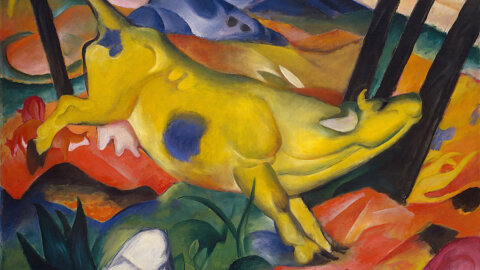Inaugurated at the Gallerie d’Italia in Piazza Scala, the Intesa Sanpaolo’s museum site in Milan, a major exhibition dedicated to Romanticism. There are 200 works by Italian and foreign artists, from Hayez to Corot, from Turner to Molteni. Curated by Fernando Mazzocca, the exhibition runs from October 26, 2018 to March 17, 2019.
The exhibition is divided in 21 sections, 16 at the Gallerie d’Italia and 5 at the Museo Poldo Pezzoli. The works retrace Romanticism through a selection of paintings and significant portraits.
President Emeritus of the Intesa Sanpaolo Bank Giovanni Bazoli presented the exhibition and began his remarks introducing the “Project Culture’ concept initiated by the Italian banking institution. “Project Culture” seeks to spread Italian art of well-known artists, as well as those more obscure, and as a result, spread cultural awareness both throughout Italy and internationally. “I believe that the moment has come when it is correct for Milan to have dedicated this palace to be a museum. And so, like this, a new important and admirable museum was born, due to two extraordinary reasons. The first is that the Gallerie d’Italia is located between the La Scala Opera House and Milan’s City Hall. It is thus in the true heart of the city. It is also important to underline that this exhibition results from an active collaboration with the Museo Poldo Pezzoli located a mere few steps away. The second reason is that these palaces were born as a bank seat but now the bank no longer uses them. They truly seem to have been born to always be a “museum.” Bazoli continued with his remarks – “I want to remember that in this location there are permanent collections from the nineteenth and twentieth centuries. The twentieth century art collection is fruit of the relationship which began in the time of Comit (Banca Commerciale Italiana) and then bank president Raffaele Mattioli. “Promoting Italian masterpieces signifies expressing a national identity focused on values. Proposing exhibitions, even temporary exhibitions, contribute to the emergence of national knowledge and a national identity that can help our country rediscover itself”.
The exhibition is divided in sixteen sections. Each section explores and provides greater understanding of values of the period of Romanticism and illustrates the sensibility of the era. The exhibition itinerary initiates in the section ‘A Window on the Infinite’ with Caspar David Friederich and leads onward toward stormy heaths, the Alps mountain range, the wonder of the night, and the landscape. In the guided visit, the curator Fernando Mazzocca explained that a ‘Romantic landscape is always a landscape reinterpreted’ and Romanticism works demonstrate a human immersion in nature. The Romanticists discovered the value of the night. For this reason, one sees an “obsession with the moon” in Romanticism paintings. Others, such as Panorama of Naples (“Veduta di Napoli”) by Ippolito Caffi (1864, on loan from a private collection) use nature to reveal their story. This is exemplified in the Panorama of Naples by a palm tree placed the path of a light rather Oriental in nature. The same artist Caffi evokes classicism with his Interior of the Colosseum (“Interno del Colosseo”). In the same way, the Austrian artist George Waldmuller and his works of Sicilian ruins evoke a new sense for a lost grandness.
The portrait, “the mirror of the soul,” is another exhibition theme. The exhibition cover image is the painting The Meditation (“La Meditazione”) di Francesco Hay
There are two very notable portraits of Manzoni in the room “Alessandro Manzoni. The Betrothed ” which pay homage to the Lombardian writer. Alternately, the room “Ransom of the Miserables” reveals the lowest of nineteenth century society: the miserable, the marginalized and young children forced to work too soon. This is evidenced in the two renditions of The Chimney Sweep (“Spazzacamino”) by Giuseppe Molteni.
The painting exhibition ends with “The Force of Destiny. The Historical Painting” which includes The Last Kiss to Juliet by Romeo (“L’ultimo bacio a Giuletta da Romeo”, Hayez) and The Death of Francesco Ferrucci at Gavinana (“La morte di Francesco Ferrucci a Gavinana”, Karl Pavlovic Brjullov). The final stage on the exhibition itinerary is “The Romantic Turn in Sculpture” and eight sculptures are on display, including Psyche Abandoned (“Pische abbandonata”, Pietro Tenerani) and The Peasant’s Orphan (L’orfano del contadino”, Antonio Piatti).





